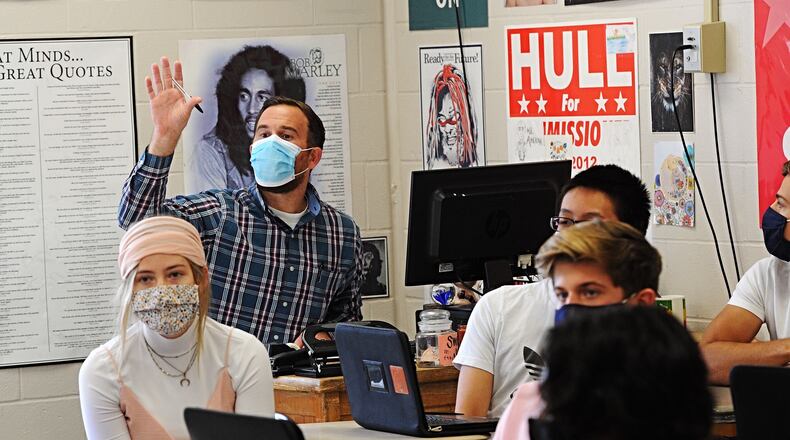DeWine spokesman Dan Tierney acknowledged that Ohio’s guidance now deviates from Centers for Disease Control policy, which still recommends quarantines in those cases. Public Health Dayton & Montgomery County officials said late Wednesday that they will follow the new policy once the Ohio Department of Health issues a formal update.
According to a document released by the governor’s office, an Ohio Schools COVID Evaluation team researched the impact of mask wearing on in-school spread of the coronavirus.
“Preliminary results of the evaluation found no discernible difference in the risk of contracting the coronavirus between those in close contact with a COVID-positive person in the classroom and those who were farther away,” DeWine’s office said.
The governor’s office said schools should continue to require quarantines for exposed students in situations where mask protocols were not followed.
“There’s evidence that age plays a role (in susceptibility to the virus), but the bigger issue is, for all grades, this shows that masks have worked,” Tierney said.
Tierney said that’s why the updated guidance does not apply if the exposure came in the school cafeteria, or during after-school activities such as sports, where masks are generally not worn.
Dayton-area schools have reported thousands of COVID-19 infections among students, teachers and school staff since tracking began Sept. 8. More than 100 cases each have been reported by Springboro, Lebanon, Centerville, Miamisburg, Northmont and Troy schools, while Beavercreek schools have reported 230 (144 students and 86 staff).
Health officials have repeatedly said that a majority of those cases were contracted outside of school. Some COVID spread has happened in schools, but that spread reportedly has been very limited because of consistent mask-wearing and other safety protocols inside schools.
Local school superintendents said in early December that strict quarantine policies have been one of their biggest obstacles this year. Staff quarantines left Fairborn so short-handed that they moved schools online for awhile, and they left Troy schools unable to bus students to school.
Beavercreek schools said they struggled to keep all students up to speed academically when some were learning every day in the classroom and others were bouncing in and out of quarantine repeatedly.
The state’s Ohio Schools COVID Evaluation was a collaboration among the governor’s office, Department of Medicaid, Department of Health, Department of Insurance, and seven school districts throughout the state.
Preliminary COVID testing results showed that “children who were close contacts and appropriately masked had rates of COVID-19 that were similar to children with no known COVID-19 exposure in school.”
The preliminary data showed 2.86% of close-contact children (appropriately masked) later tested positive for COVID-19, while 2.94% of comparison group children did. The full report from the research will be released Jan. 29.
About the Author

